

Table of contents
- Individual circumstances
- cutting tools
- Only use the knife to trim the cut surfaces
- time
- cut shapes
- clippings recycling
- Spring flowering plants
- summer bloomers
- Worth knowing shortly
- types of cuts
- Conclusion
While some plants can easily do without trimmings, others lose their flowering power without it and even develop fewer and fewer leaves over time. Cutting bushes and shrubs is therefore not always avoidable, even if there is sufficient space. With this measure, however, it is important to observe the right time, the correct procedure and the individual requirements of the plant. Otherwise, at best, only the flower will fail in a year, in the worst case, bushes and shrubs can be completely destroyed.
Individual circumstances
Magnolia or lilac, gooseberry or hazel - shrubs and bushes have one thing in common: they all have individual requirements and special features. This also applies to cutting. While there are tendencies here, both in terms of the best timing and form of cutting, there are numerous exceptions. Before the first cut, it should therefore be clear in any case which plant species it is. And what special features it has. Hobby gardeners can't avoid doing a little research here.
Tip:
Prepare site plan and plants as a sketch and note down the respective requirements and cutting times as well as fertilizer dates. This individual help eliminates subsequent confusion or the need to look it up again and again.
cutting tools
With all the differences in cutting, there is one thing that this measure has in common: the preparation of the cutting tool. Many underestimate the role played by the knives, scissors and saws used. These come into direct contact with the freshly cut surfaces, i.e. the open injuries of the plants. Special attention should therefore be paid to the blades and cutting edges. The following should be noted:
- cutting tools according to Thoroughly clean, preferably disinfect, before each use and each plant change
- only use sharp or sharpened blades
- Prefer mechanical tools, only use electric or petrol-powered tools on robust plants
Only use the knife to trim the cut surfaces
The purpose of these points is to burden the bushes and shrubs as little as possible. Clean, germ-free blades cannot introduce pathogens into the cut surface and reduce the risk of infection. Sharpened cutting edges do not crush and shred the plant parts, which means that the open cut surfaces can close faster and better. This in turn prevents infestation with pests and diseases. And also ensures less contact surface for burns.
The preferred choice of mechanical scissors and knives meant smoother cut surfaces. Motorized variants often shred at least the leaves, but mostly also shred wood and bark. This means that shrubs and bushes can be pruned faster overall, but they become susceptible to parasites and germs after each intervention. In addition, the optics can be disturbed. Subsequent processing of the cut surfaces is often advisable for hard wood, stronger shoots and branches if a saw had to be used here. But even if tears and shredded pieces of bark have occurred as a result of the cutting, the surface can be smoothed out with a knife and thus cleaned up. The smoother surface closes faster than is possible with bumps. The risk of infections and invading pests is reduced.
time
Whether spring or autumn, some rules should be observed when choosing the time. Above all, lighting conditions and weather play a role in blending. The following points are crucial:
- do not cut in high heat or in the blazing sun
- Avoid frost on cutting day
- If possible, do not cut when it is raining or when the air humidity is high
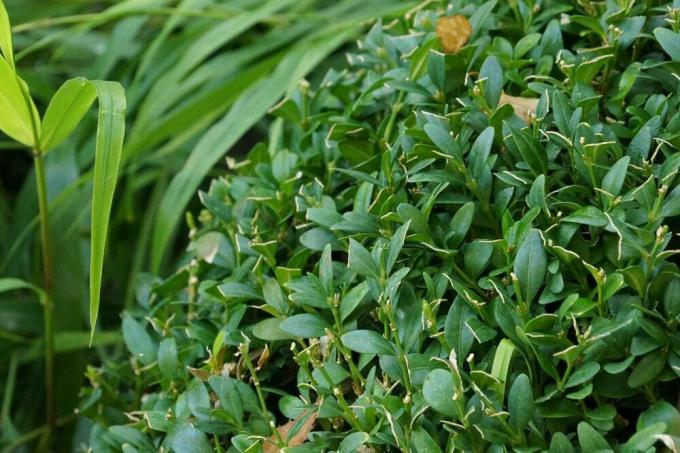
Usually moderate temperatures are ideal, between 15 °C and 25 °C. Dry air can help the laundry to seal the cut surfaces as quickly as possible. Dry heat and blazing sunlight, on the other hand, lead to burns. On the other hand, very humid air or even rain prevent drying. Damage also occurs in the event of frost. So good timing is required here.
cut shapes
When trimming shrubs and bushes, a basic distinction is made between different forms. These include:
- care cut
- Thin out
- taper cut
- shaping
- compression
When pruning, only damaged parts of the plant and dried flowers are removed, all healthy and living shoots are preserved. So these are just corrections. Depending on the plant, however, weak, thin branches can also be removed or the size reduced.
The thinning strives for what the name already suggests. Remove shoots that grow inward, cross or constrict each other. This measure is advisable from time to time, especially with berries, as it provides the fruit with sufficient light all around.
The taper cut is significantly more radical. On many plants, the branches are cut back to the ground or at least significantly and back to the main shoots. It makes sense to remove over-aged plant sections and thus stimulate new shoots. The shaping of a box tree or a hedge, for example, is often quite radical at first, but is carried out in several steps. The goal is to achieve a special, artificial shape. The compression is intended to ensure that the plant branches out more in a targeted manner - i.e. has no gaps or holes. For this purpose, new, young shoots are repeatedly cut off so that the remaining branches branch out several times.
clippings recycling
After cutting bushes and shrubs, depending on the number of plants, a considerable amount of clippings can accumulate. It is often hardly possible to use this completely on the compost. And it doesn't always make sense either. Leaves and twigs should be examined carefully. If they show signs of pests and diseases, they must be destroyed immediately and safely. Otherwise, they could infect other growths, even if they are far away from them. Healthy, harmless material can be chopped up and then used as mulch or added to the compost.
Spring flowering plants
If shrubs and bushes bloom early in the year, they should also be pruned early. Best after flowering is over. The procedure is as follows:
- First remove all dried, withered flowers.
- Shorten all shoots by about a quarter to a third.
- Cut branches that grow inwards close to the larger shoot or close to the ground.
- Check for any damaged sections and make corrections as necessary.
- Remove or severely trim stale branches that are neither flowering nor leafy.
Tip:
In the case of fruit-bearing plants, the cutting should of course be delayed. In this case, early autumn is often the better time.
summer bloomers
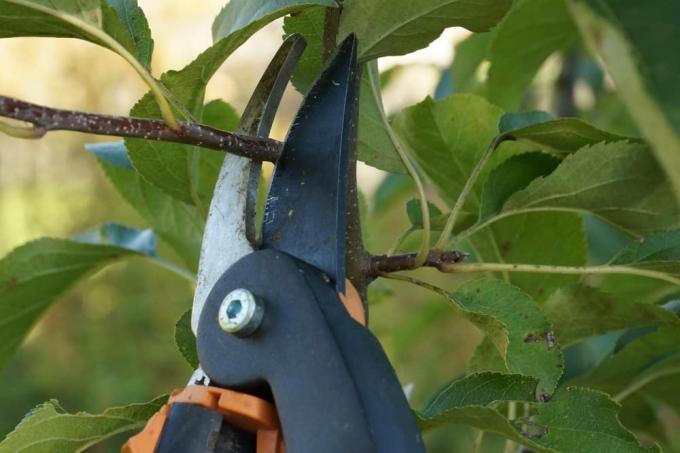
If bushes and shrubs flower a little later in the season, they should be pruned in the cold season. Although trimming is usually possible in autumn, early spring is better - before the first budding. Again, all dead, dried up, weakened or faded and frozen sections are removed. However, special attention should be paid to not simply shortening all around, but removing disturbing shoots as close to the ground as possible. Otherwise the plant will age quickly and then show less sprouting.
Due to the numerous individual peculiarities and the exceptions to the rules, it is only possible to make general statements and give instructions to a limited extent. Before cutting shrubs and bushes, the special requirements of the plant should therefore be found out.
Worth knowing shortly
If you want to cut bushes and trees, you not only need to know how to cut, but also when. The ideal pruning time is often important for the bush to survive and thrive. Bushes are mainly pruned so that they do not bare and age prematurely. In addition, growth often has to be curbed in the garden so that bushes do not become too large.
cutting bushes
- In general, it can be said that woody plants, which include bushes, are pruned in winter, usually just before they sprout.
- Many bushes can be trimmed into good shape during the leafless period as the view is not obstructed by leaves.
- The plants are in the dormant phase. There is little juice in the shoots. This means that only a little juice escapes when you cut it.
- In addition, there are significantly fewer diseases and pests on.
Exceptions to the winter pruning
- All the bushes that have already created their flower buds in the past year are not pruned in winter.
- They include the typical early flowering shrubs such as forsythia, lilac, rhododendrons, daphne and others.
- These are cut immediately after flowering and then form new buds again.
cutting shrubs
- Most shrubs if planted in spring or autumn, then this cut must also be done at this time.
- When pruning, you only adjust the ratio of roots and shrubs.
- Both are shortened a bit to strengthen them.
- Thin indexes can be removed, while the strong ones remain.
- Thin roots are easily cut back, strong ones remain untouched.
types of cuts
care cut
- Thinning out takes place in winter. It is easiest for bushes without leaves. You can see the shape well.
- The bushes must not be too densely equipped with branches on the inside so that the leaves can dry off well when it is wet.
- Otherwise, fungi and other pathogens can accumulate.
topiary
- The topiary is also done in winter.
- This is best possible without leaves, but also evergreen bushes can be cut to shape.
- It's easy with templates.
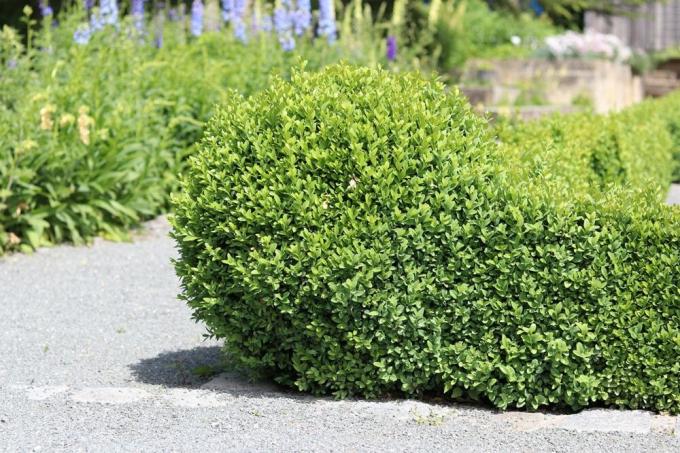
taper cut
- This is also carried out in winter, shortly before budding.
- When the bush becomes bare from below, it is high time for a trim.
- Some bushes can be pruned radically, they cope well and willingly sprout again.
- With others you have to be more careful and spread the cut over several years.
- Only remove one or two of the dead shoots at a time until the entire bush has rejuvenated.
maintenance cut
- The maintenance cut should be carried out in the sap-poor period.
- As a rule, this cut is limited to thinning out. In addition, old, protruding branches are cut out.
- This pruning should be done regularly, every year, then radilak will never have to be pruned.
Conclusion
Almost all bushes grow better when pruned. Pruning is usually done in winter, just before budding begins. Exceptions are the plants described above. It is good to cut very little every year. Many trees and shrubs do not tolerate a radical cut so well.
 garden editorial
garden editorial I write about everything that interests me in my garden.
Learn more about pruning

Eucalyptus dried up: cut back now?
When a eucalyptus dries up, some owners immediately think of cutting it back. Because they want to see fresh green bud quickly. The chances of that happening may be good. But one thing must not be left out: research into the causes! Otherwise a new cycle of drying up and cutting begins.
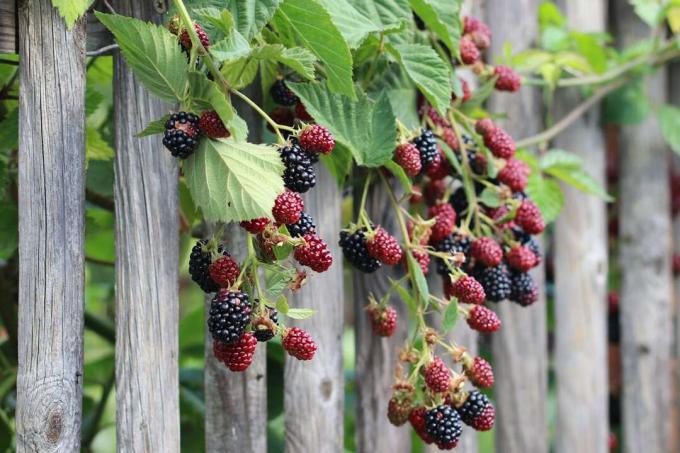
Cut blackberries: Instructions for the right cut
Bramble branches only bear fruit for one summer, after which they are used up and die off in winter. It's a good thing that new canes grow back in time for the following year. Cutting care means: What no longer supports should be removed, young rods must be optimally trained.

cutting snowball | 13 tips for pruning
When it comes to snowballs (Viburnum), the opinions of numerous hobby gardeners differ when it comes to cutting. Main reason against pruning: Destruction of the natural appearance by pruning. Find out now when it is unavoidable and which tips should be heeded.

Cutting sage: 6 tips for cutting back
Cutting measures and their ideal time depend on the species of sage plants, because they have differentiated ways of life. There are woody and herbaceous representatives that require different attention. In order to carry out the measures, a basic set of tools is helpful.

Pruning hydrangeas: when is the right time?
Hydrangeas are a real beauty because of their flowers. In the long term, however, the flowering power is only maintained if regular pruning takes place. Because cutting off withered or dried plant parts offers protection. The following guide shows when this measure should be taken.
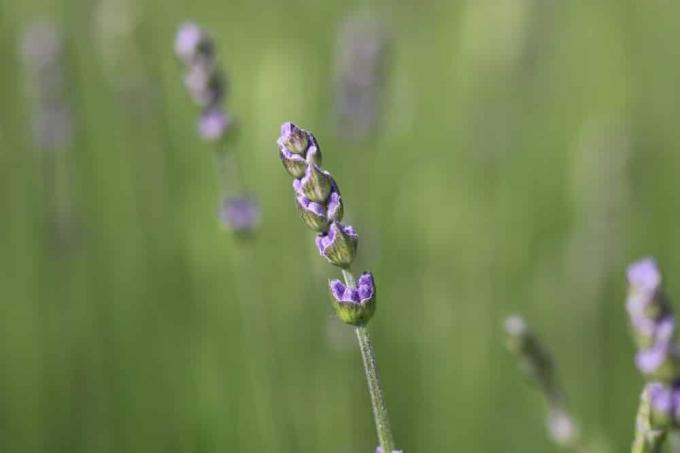
Cutting Lavender | When is the best time?
Lavender is a popular perennial, but difficult to cut. Without regular pruning, the shrub becomes lignified and less robust. Choosing the right time is important for pruning. When to cut depends on the use of the perennials.



